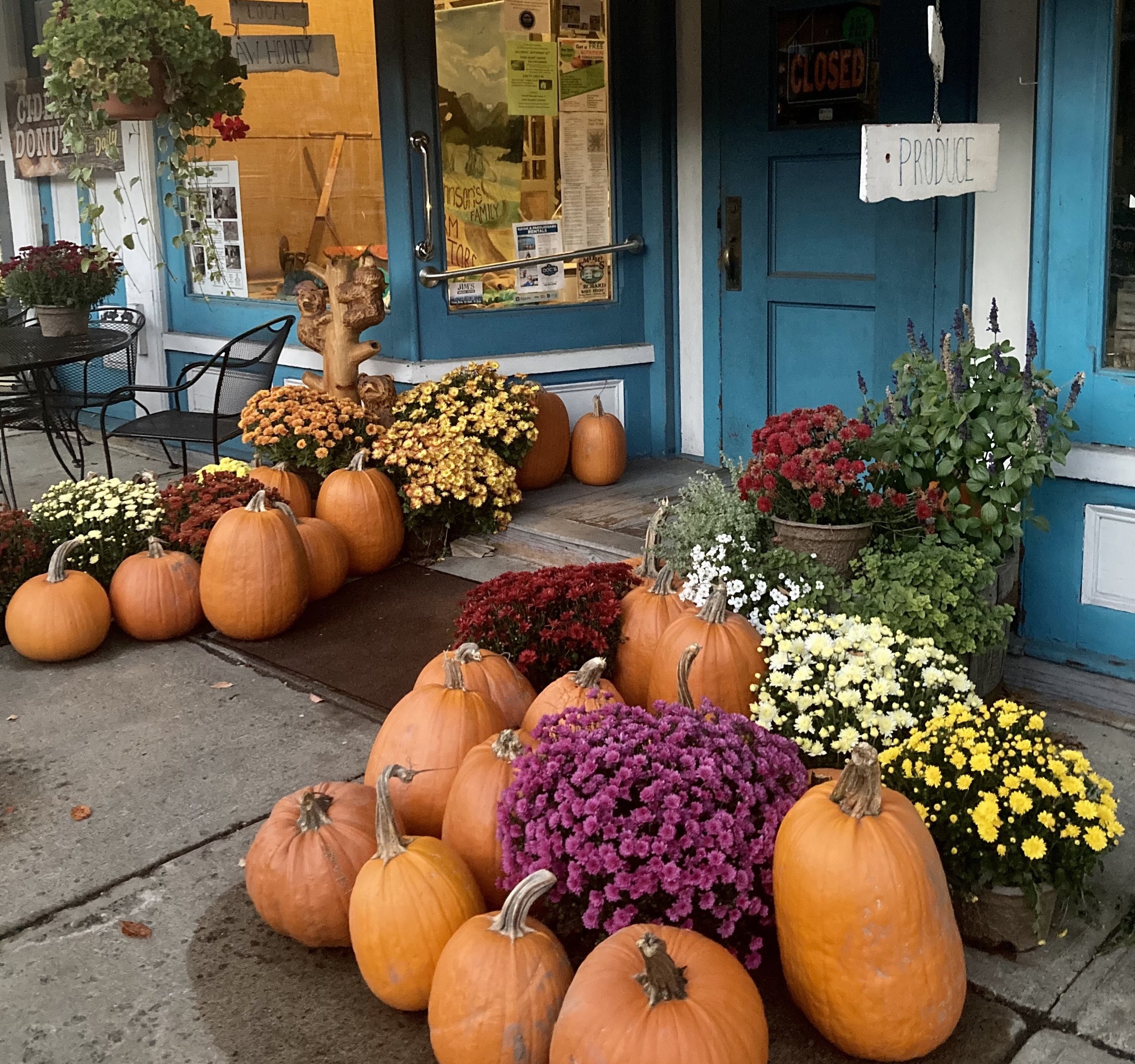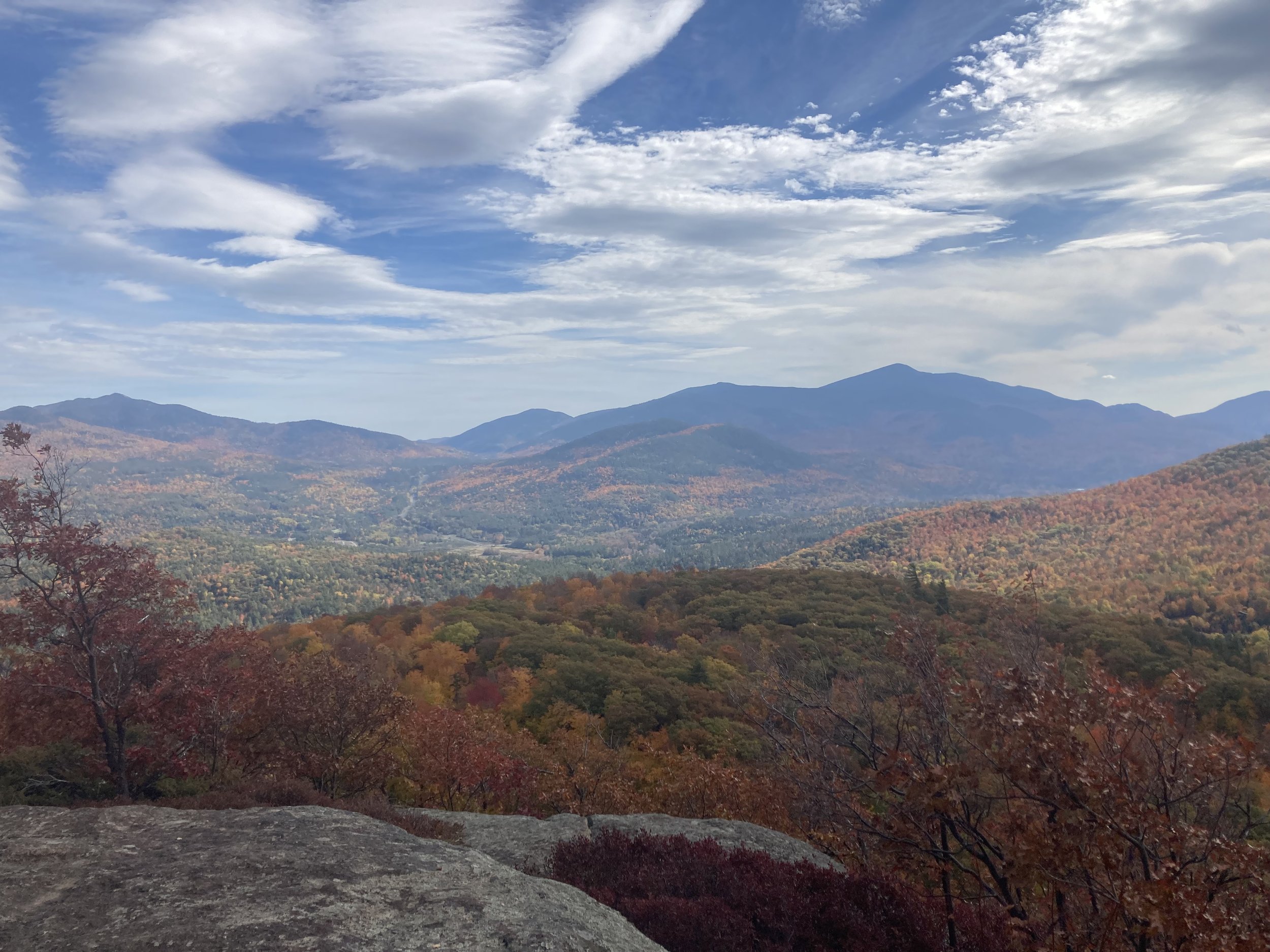水沢腹堅 Ice thickens on streams
高岡古城公園梅の花 Plum blossoms in Takaoka Kojo Park
季節の移り変わりにいつも興味がありました。日本に引っ越す前にも、季節に対たいする意識いしきは強かったです。大学一年生の時、同級生と授業へ歩いて、「あ、もうすぐハナミズキが咲く!」と言いて、同級生は「ハナミズキて何?」と答えたの覚えっています。ルックアウトマウンテンで育って, 山側は自然公園保存地区なので、いつも麓から上に運転てんして、森林に囲まれて、春になって星のようにハナミズキの花が散りばめられました。なので、春になって、ハナミズキの花を期待たいして待っていました。しかし、同級生はハナミズキの木さえ知らなかったです。そして、同級生がハナミズキを知らないと言うことを考えて、「何かを知らなければ、それを期待することも、楽しむこともできない」と思いました。それが、私が散歩する時にいつも友達に木の名前を覚えさせる理由の 1 つです!
ニューヨーク州ノースビルの店で菊とパンプキン Chrysanthemums and pumpkins in Northville, New York
もちろん、アメリカにも季節の鑑賞があるんですが、季節そのものよりも、ホリデーが近づくことが楽しみだと思います。9月下旬にハロウィンデコレーションを見るのは珍しくないです!ハロウィンデコレーション以外の秋デコレーションもあって、9月上旬から人々の家の前に、菊やパンプキンが干し草の俵の上に飾られているのをよく見ます。彩りの金、銅、紫、赤の菊とパンプキンは陽気で、来たる紅葉を予期しているみたいです。意味とか理由があるかどうか分からないけど、いつも楽しみました。そしてもちろん、アメリカの代表する季節限定ドリンク、パンプキンスパイスラテも忘れてはいけません!しかし、日本のスターバックス はアメリカのスターバックス より季節限定ドリンクが豊富だと否定することができないです。
私は季節の物に夢中になっているので、友達が時々からかって、日本に着いて季節の物をたくさん見たときは、もちろん大喜びでした!私のように、これからの季節を心待ちにしている方がたくさんいました。毎年、高岡古城公園で梅の花を見に行きました。私のように、梅の木の周りに「かわいい!」と言って、 写真を撮った人が多かったです。三味線を習い始めた後で、歌詞で季節のテーマや言葉に関連していることがよくあると気づきました。例えば、「梅が咲いたか」とか、「夕立」、とか「氷雨」(最後は演歌の歌だけどね)。着物を着ることにも季節の鑑賞が必要です。着物を着始めた頃はこの表を使っていました。 こちらでさらに詳しく説明されています。 季節のモチーフは季節の直前に着るべきだと私を理解しています。 例えば、桜のモチーフはお花見に着るのではなく、桜が咲く前に着ます。これからの季節に着物と帯を合わせたり、「秋の七草」「菊」「ススキ」などの具体的なキーワードでヤフオクで着物や帯を探したりと、かなりの楽しい時間を費やしました。
日本古典の暦の72候の季節というアイデアに魅了されています。最近、この72候を説明する素晴らしいアプリを発見しました。このアプリでは、季節の名前、説明と歴史、それに合わせた画像と詩を英語で紹介しています。それを通して、季節をもっと楽しむことができると思います。(このポストのタイトルは72候の一つ、1月25日から29日までの「水沢腹堅 」(さわみずこおりつめる)です。)ところで、「候」の漢字を調べていたら、「七十二候」を日本語でとてもきれいに紹介しているサイトを見つけました。そして、コンセプトは「日本の季節や旬のものを楽しめる大人になりたい」です。私と同じですね!
三味線の先生も、季節に合わせて細かい飾りがあったり、季節の花を毎週新しいアレンジで飾ってくれました。先生の家に足を運んで、季節を存分に楽しむことができました。「いつか、季節に合わせた花や詩を知っている、こんな粋な人になりたい!」と思いました。
あなたは季節について、どのような意見を持っていますか? どんだ風に楽しんでいますか?
I have always been interested in the change of seasons. Even before I moved to Japan, I had a strong awareness of the seasons. When I was a 1st year in university, I remember walking to class with a classmate and saying “ah, the dogwoods will flower soon!” and they replied, “what’s a dogwood?” I grew up on Lookout Mountain, and the side of the mountain was a preserved natural area, so when we drove from the bottom to the top the forest surrounded us, and in springtime the dogwood flowers bloomed and were scattered throughout like stars. So, thinking of my classmate who didn’t know what a dogwood was, I thought if we don’t know something, we can’t notice or enjoy it. That’s one reason I always make my friends learn the names of trees when we take a walk!
People also have a way of appreciating the seasons in America, but I think rather than the season itself, people look forward to approaching holidays. It’s not uncommon to see Halloween decorations starting in late September! But there are also other autumn decorations besides Halloween ones, and from the beginning of September you can often see chrysanthemums and pumpkins arranged on bales of hay in front of people’s homes. The colorful pumpkins and chrysanthemums in gold, copper, purple, and red are cheerful and seem to anticipate the coming autumn. I don’t know if there is a real meaning or reason for it, but I always enjoyed it. And of course, don’t forget Pumpkin Spice Latte, America’s classic seasonal drink! Still, it can’t be denied that Starbucks Japan has a lot more seasonal drinks than Starbucks in America.
My friends sometimes teased me for being obsessed with seasonal things, so of course when I arrived in Japan and saw so many seasonal things I was naturally overjoyed! There were many people like me who were anticipating the coming season. Every year, I went to Takaoka Kojo Park to see the plum blossoms. Like me, there were lots of people around the plum trees exclaiming “how cute!” and taking pictures. After I started learning shamisen, I noticed that the lyrics often have seasonal themes and words. For example “Ume ga saitaka” (Has the plum bloomed yet?), “Yudachi no” (A sudden summer rain), and “Icy Rain” (that last one is from an enka song though!)
Wearing a kimono also requires an appreciation of the seasons. I used this table when I began wearing kimono. It’s explained in more detail here. From what I understood, seasonal motifs should be worn just before the season. For example, a motif of cherry blossoms should not be worn when going to see cherry blossoms, but just before the cherry blossoms bloom. I spent a lot of fun times matching kimono and obi for the approaching season, and searching for kimono and obis with very specific keywords on Yahoo Auction like “aki no nanakusa” (the seven herbs of autumn), “kiku” (chrysanthemum), and “susuki” (pampas grass).
ニューヨーク州紅葉 Fall color in New York State
I am fascinated by the idea of the 72 seasons in the classical Japanese calendar. And in fact, I recently discovered a great App for this! The app shows you the seasons and their names, as well as some history and meaning, and poems and photos to match (all in English.) I think we can enjoy the seasons more through it (the title of this post, “sawamizu kōri tsumeru” (ice thickens on streams) is one of the 72 micro seasons, from January 25-29th.) Actually, when I was double-checking the kanji for the seasons, I found a really nice site which introduces the 72 season in Japanese. And the concept is “I want to be an adult who can enjoy the seasons and seasonal things in Japan.” Same as me right!?
My shamisen teacher also had many small decorations to match each change of season, and had a new flower arrangement every week. When I visited her house, I felt like I could enjoy the season to the fullest, and I thought “Someday, I want to be such a stylish person who knows the right flowers and the right poems to match each season.”
What about you? Do you have any special way of enjoying the changing seasons?




















